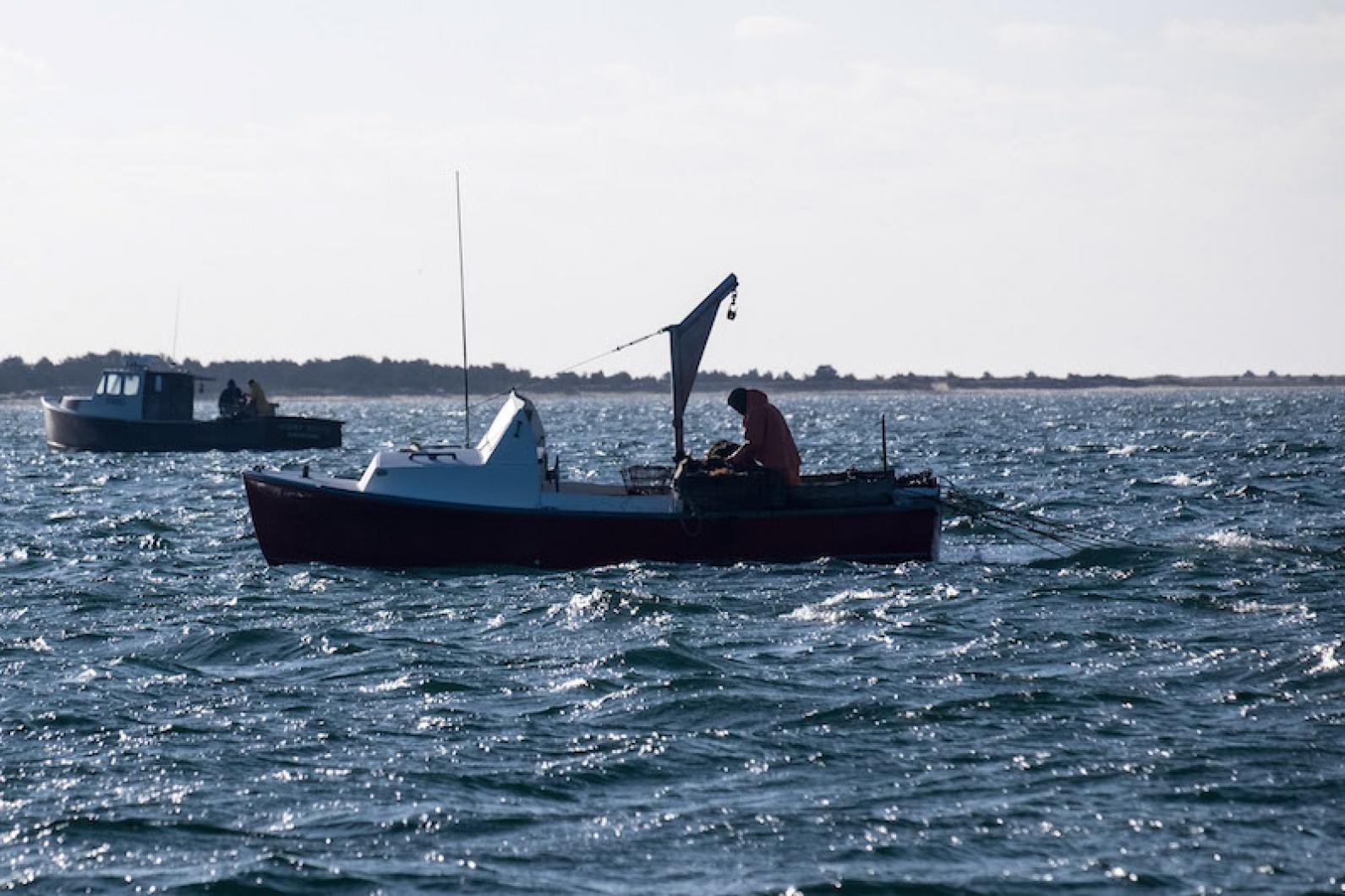Oyster Farm Futures The oyster farm business in Katama Bay is booming, a feel-good success story that has benefited young fishermen and the town alike. With all twelve leases in the bay in active use and more fishermen waiting in the wings hoping for the chance to join the burgeoning aquaculture industry, the Edgartown shellfish committee is right to look for other areas in town that could be put to good use as oyster farms.
But the committee was also right this week to put the brakes on a plan to open up Cape Pogue Pond to oyster farming. Concerns expressed at the meeting ranged from its potential effect on the conch and scallop fisheries to worry about hazards to navigation. While the idea may have merit, any action that could alter this remarkable natural asset deserves careful study and deliberation.
And Cape Pogue Pond is remarkable. A vast, pristine 1,400-acre saltwater lagoon at the northeastern edge of Chappaquiddick, it is unique among coastal ponds on the Vineyard.
A 1998 study by Arthur Gaines, a former senior scientist with the Woods Hole Oceanographic Institution, documented the rare natural ecosystem in the pond, including some little-known facts about the pond.
For example Cape Pogue Pond is not an estuary but rather a seagrass lagoon, salty and undiluted and almost entirely the product of ocean waves, current and wind.
The pond system includes 4,000 acres of upland barrier beach, open water and marshland, nearly all of it unbuilt and unspoiled save a handful of summer camps. The pond is surrounded by hundreds of acres of conservation land owned and managed by The Trustees of Reservations.
But even twenty years ago, Mr. Gaines was sounding the alarm about the future for the pond.
“The pond has until now been spared most of the destructive forces that sully or destroy so many coastal assets,” he wrote. “Nevertheless, in the face of escalating pressure it is not clear the pond can continue to survive into the future as an intact natural system.”
The Gaines report was always intended as a baseline. When it came out Edith W. Potter, a former selectman and longtime Chappaquiddicker, hoped it would lead to a second study that among other things evaluated the bay scallop fishery. That followup study never happened, but the time seems ripe today to revisit her notion with a broader review of the pond that includes not only the state of the scallop fishery but the potential for a commercial oyster fishery as well.
At the same time, the shellfish committee, with help from the selectmen and the Trustees, should continue their search for other possible sites for oyster farming.
The Martha’s Vineyard Commission can offer coastal planning assistance, and the nonprofit Martha’s Vineyard Shellfish Group is a trusted and valuable ally and resource for Island towns in all matters relating to shellfish and aquaculture. Funds are even available for coastal studies, including from the Edey Foundation, which coincidentally announced its annual grant application cycle this week. And with Eunice Youmans recently named as general manager of Island properties for the Trustees, there is new energetic leadership at the helm of this important conservation organization and Chappaquiddick stakeholder.
The decision by the shellfish committee this week no doubt comes as a disappointment to Noah Scheffer, the young fisherman who applied for a lease to build an oyster farm in Cape Pogue Pond. While Mr. Scheffer may have to wait for his farm, his application benefited the larger community by opening up discussion and raising awareness of the demand for suitable aquaculture sites.
Aquaculture is no longer an experiment — it’s here to stay and rapidly entering a second generation. With the potential to employ more people in a sustainable enterprise ideally suited to our Island location, it is worth the investment in a well-thought out plan for expansion.




Comments (1)
Comments
Comment policy »